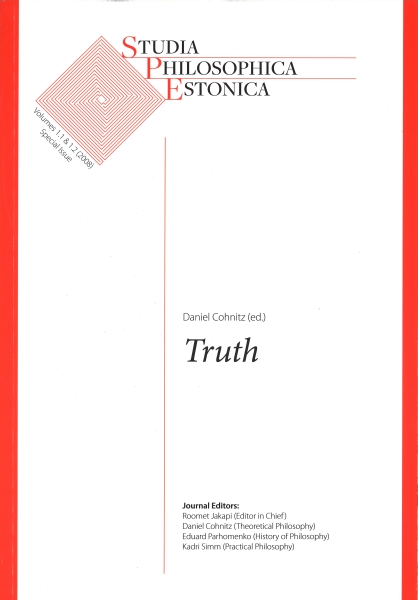Why and How to Be a Dialetheist
DOI:
https://doi.org/10.12697/spe.2008.1.2.05Keywords:
dialethism, paraconsistency, semantic paradox, liar, assertionAbstract
In the first part the paper rehearses the main arguments why to be a dialetheist (i.e. why to assume that some contradictions are true). Dialetheism, however, has been criticised as irrational or self-refutating. Therefore the second part of the paper outlines one way to make dialetheism rational assertable. True contradictions turn out to be both believable and assertable. The argument proceeds by setting out basic principles of assertion and denial, and employing bivalent truth value operators.
Downloads
References
Batens, D.(1989). Dynamic dialectic allogics, in G. Priest, R. Routley and J. Norman (eds), Paraconsistent Logic, Philosophia, Munich.
Batens, D.(2000). A survey of inconsistency-adaptive logics, in D.E.A. Batens (ed.), Frontiers of Paraconsistent Logic, Research Study Press, Baldock, pp. 49-73.
Bremer, M. (2005). An Introduction to Paraconsistent Logics, Lang Publishers.
Field, H.(2008). Is the liar sentence both true and false?, in J. Beall and B. Armour-Garb (eds), Deflationism and Paradox, Oxford University Press, Oxford.
Marcos, J. (2005). Logics of Formal Inconsistency, Campinas.
Priest, G. (1979). The logic of paradox, Journal of Philosophical Logic 8: 219-241.
Priest, G. (1987). In Contradiction, Martinus Nijhof, Dordrecht.
Priest, G. (1991). Minimally inconsistent LP, Studia Logica 50: 117-129.
Priest, G., Beall, J. and Armour-Garb, B. (eds) (2004). The Law of Non-Contradiction, Clarendon Press, Oxford.
Routley, R. (1979). Exploring Meinong’s Jungle and Beyond,Canberra.

